 Home
Home
rOm
Quest
Glossary
Random
Page
Search
Site
Lush
Sim
Class
Subject
Images
Help
FAQ
Sign
Up
Log
In
WANTED: Individual or team to take over this project. I'm in my 70's and want to put my feet up. Contact details in footer.
Analogue Infra-Red AM Transmitter
-
With this transmitter the infra-red LED glows at constant brightness. This is the carrier signal.
-
The input information signal increases and decreases the brightness of the LED.
-
This is amplitude modulation.
-
The line input could be connected to a computer sound card, phone or any similar device.
-
To drive a higher power LED, a source follower should be added after this amplifier, possibly with separate biasing.
-
You can find out if your IR LED is lit by viewing with a mobile phone camera.
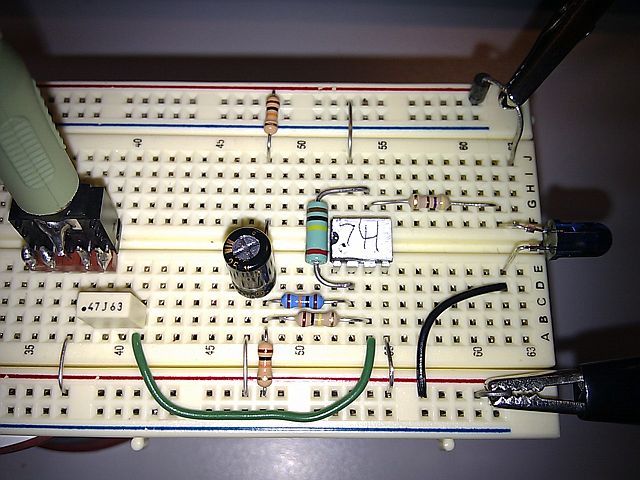

Using a mobile phone camera to "see" infra-red
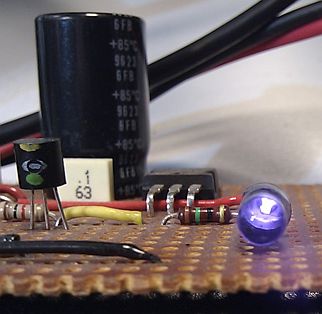
Analogue Infra-Red AM Receiver
-
The infrared detector is a "current to voltage converter".
The op amp inverting input (2) is a virtual earth ( held at +6 Volts by the two 10K resistors wired as a voltage divider ).
A BPW41 photodiode is used here.
-
The output voltage alters to keep the pin 2 input voltage as close to 6 Volts as possible.
-
The 10M feedback resistor is a compromise. A bigger resistance increases the sensitivity but also increases the background noise (hiss) produced by the circuit.
-
A low noise CMOS FET op' amp' is preferred here but the 741 chip works well enough.
-
The photodiode can be replaced with a phototransistor. Bright infrared light might make this circuit saturate.
-
The 10M feedback resistor could be made variable if the sensitivity needed to be adjusted.
-
The LM386 chip works on up to +12 Volts.
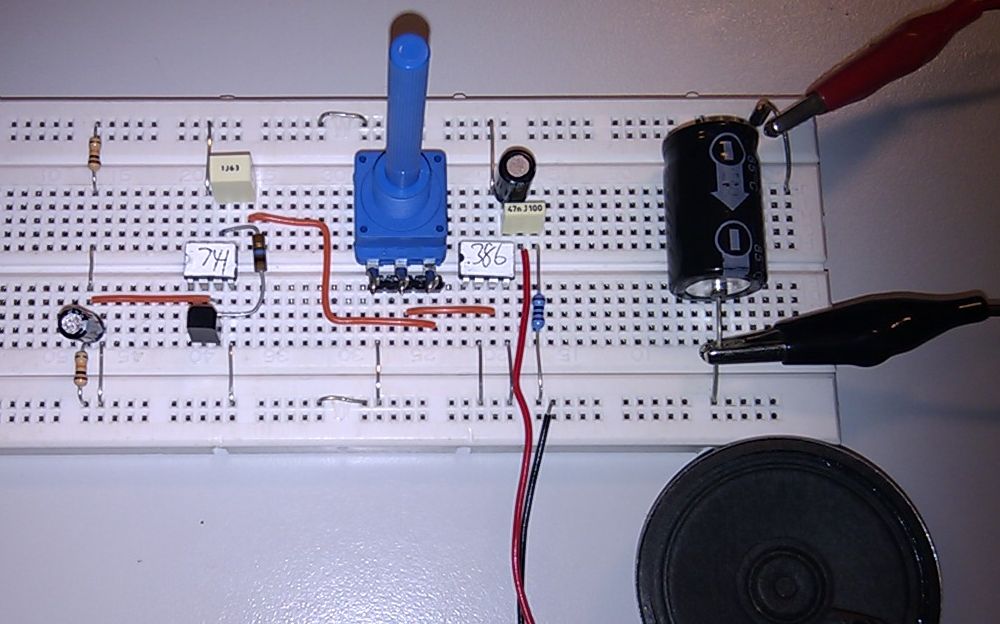
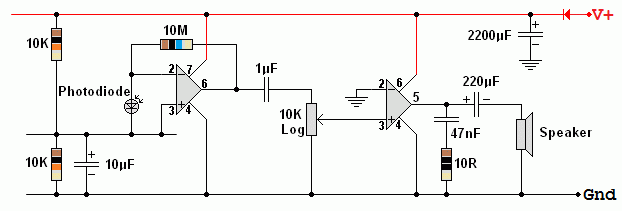
This circuit produced little noise or hiss as long as all the lights were turned off. The fluorescent lights were the worst for noise generation.
Media - Using Lenses to Improve Efficiency
-
In free space, these circuits have a rather short range.
-
Using lenses to focus the beams increases the range greatly.
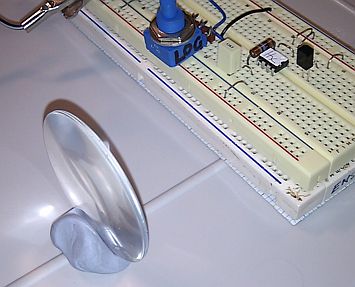
-
A visible LED can be used to set up the optics and then return to using infrared afterwards.
-
Some types of optical fibre are good at channelling infrared.
-
Using LASERs, the distance record is 24 000 000 km through interplanetary space. On land it's about 150 km.
Alternative AM Transmitter
This uses a summing amplifier to combine the two stereo inputs into one monophonic infrared beam. The input resistance is 47kΩ which matches most audio line devices.
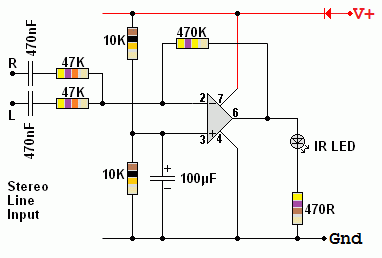
Subject Name
Level
Topic Name
Question Heading
First Name
Last Name Class ID
User ID
Question Text
image url
Help Link
Add
Delete
Clone
Edit
Hardness
Help Text
Debug
- You can attempt a question as many times as you like.
- If you are logged in, your first attempt, each day, is logged.
- To improve your scores, come back on future days, log in and re-do the questions that caused you problems.
- If you are logged in, your most recent wrong answers get remembered. This might help you and your teacher to correct your understanding.
- In the grade book, you can delete your answers for a topic before re-doing the questions. Avoid deleting unless you intend re-doing the questions very soon.







